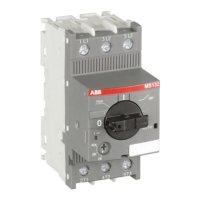MANUAL MOTOR STARTER GUIDE
APRIL 19 58/80
7.2 North American voltage supply networks and load types
Electrical networks in North America supply power to residential, commercial, and industrial structures. Depending
on the amount of power required for a given installation, various voltage configurations can be utilized.
7.2.1 North American voltages
North American commercial installations are typically supplied using either 120/240 V AC split (dual) or
208Y/12 0 V AC, 3-phase wye networks. Industrial installations within the U.S. commonly use 480Y/277 V AC, 3-phase
wye networks. For Canada, the network voltages are increased to 600Y/347 V AC. However, 3-phase delta networks,
which do not offer a line-to-neutral voltage, are also common, most often supplying either 240, 480 or 600 V AC.
Application
Network configuration
Nominal supply voltage
Nominal supply voltage
Commercial
2-phase, 3-wire 240 V AC 2-phase (split/dual) 120 V AC 1-phase
Industrial and large commercial
in the United States
Industrial and large commercial
in Canada
Table 22: North American voltages
Manual motor starters are commonly applied in both industrial and commercial applications. To meet the require-
ments for North America, they are suitable for use on 1- and 3-phase networks with line-to-line voltages up to
600 V AC.
7.2.2 Three-phase network configurations
North American 3-phase supply networks differ based on the secondary winding of the upstream transformer. The
two most common secondary winding styles are wye, which includes three power legs and a neutral, and delta, which
includes only three power legs without a neutral connection. These networks can be either grounded or ungrounded.
Solidly grounded wye and ungrounded delta networks are most common in North America.
Delta
Wye Delta
Delta
Solidly grounded networks
Figure 35: Three-phase network configurations.

